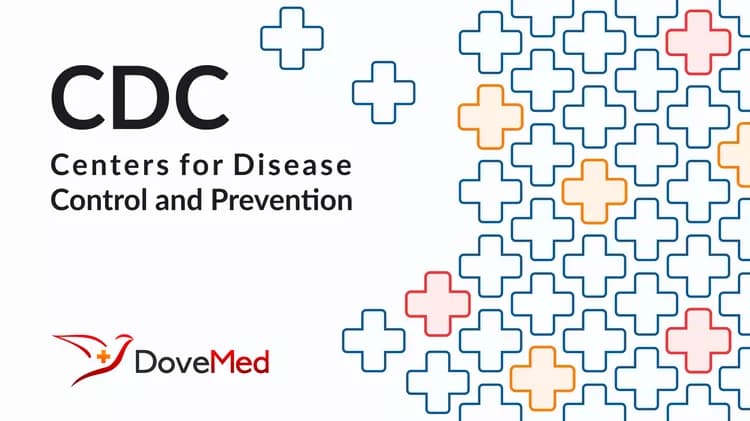
Tuberculosis in the United States, 2004
Tuberculosis in the United States, 2004
TB at all-time low, but decline is slowing and racial disparities persist
More than one-third of the global population is infected with the tuberculosis (TB) bacterium, and TB disease remains one of the world’s leading causes of disease and death. Each year, 8 million people become ill with TB, and 2 million people die from the disease. World TB Day on March 24 – the date in 1882 that scientist Robert Koch announced his discovery of the TB bacterium – is an international call to action against the disease.
In the United States, the latest national surveillance data show a significant, but slowing, decline in the case rate of TB. In 2004, a total of 14,511 TB cases were reported in the U.S. The overall TB case rate – 4.9 per 100,000 persons – was the lowest rate ever recorded since reporting began in 1953. However, the decline in the case rate from 2003 to 2004 was one of the smallest in more than a decade (3.3 percent compared with an average of 6.8 percent per year). And despite the nationwide downward trend, TB continues to exact a severe toll on many U.S. communities. Seven states now bear more than half the total burden of TB disease in the U.S. California, Florida, Georgia, Illinois, New Jersey, New York, and Texas account for 59.9% of the national case total. The toll continues to be greatest among minority and foreign-born individuals, who consistently have higher rates of TB disease.
TB’s Racial and Ethnic Disparities
In 2004, minority populations had rates of TB significantly higher than the overall U.S. average. The 2004 TB case rate among Asians was 20 times higher than that among whites (26.9/100,000 and 1.3/100,000, respectively), while blacks (11.1/100,000) and Hispanics (10.1/100,000) each had rates eight times higher than whites.
In 2004, for the first time, there were more cases of TB among Hispanics than any other ethnic group. However, the TB rate among Hispanics decreased slightly from 10.3 in 2003 to 10.1 in 2004. This divergent trend was the result of a 3.6 percent increase in the U.S. Hispanic population between 2003 and 2004.
Impact on Foreign-Born Persons
The TB rate among foreign-born individuals (22.5/100,000) was nearly nine times the rate among persons born in the United States (2.6/100,000). Individuals born outside the United States accounted for more than half (7,701 cases, or 53.7 percent) of all new TB cases in 2004.
While the TB rate among U.S-born persons has declined 64.6 percent over the past 12 years, the rate among foreign-born persons has declined only 33.9 percent.
Ninety-five percent of Asians reported to have TB in the U.S. in 2004 were foreign-born. Foreign-born individuals also accounted for the majority – 74 percent – of cases among Hispanics in the U.S. Globally, Asia accounts for the largest number of TB cases. The impact of TB on Mexico is also worrisome because many Hispanics diagnosed with TB in the U.S. were born in that country.
Accessing and Completing TB Therapy
The proportion of patients completing treatment in a timely manner is an important measure of the effectiveness of TB control efforts. Treatment is recommended for 6 to 9 months, and patients who do not complete therapy are at increased risk of developing multidrug-resistant TB (MDR TB). The most recent treatment-completion data (2001) show that 81.4 percent of U.S.-born and 80.4 percent of foreign-born TB patients completed therapy within one year. There was no significant variation in treatment completion by race. Health officials hope to increase treatment completion rates in the U.S. to 90% by 2010.
Significant Decline Seen in Multidrug Resistant TB
Cases of MDR TB have declined sharply in the U.S. over the past decade. In 2003, the most recent year for which there is resistance rate reporting, 114 individuals were reported with MDR TB – a 76.5 percent decline since 1993. Of these individuals, 28 were born in the U.S. and 86 were born in other nations. Because previous data suggest little variation in rates of treatment completion by country of origin, the greater proportion of cases of MDR TB among foreign-born individuals is likely the result of TB infection in the person’s country of origin, where MDR TB rates are higher than in the U.S.
Stepping Up TB Elimination Efforts
Even though preventable and treatable, TB remains a serious airborne disease – one with the ability to adapt, grow stronger, and travel from one country to another as easily as people do. The health threat must continue to be taken seriously, both here in the U.S. and abroad.
CDC is working to strengthen global partnerships to address TB among populations hardest-hit by the disease. These efforts include improving overseas screening for immigrants and refugees, and testing recent arrivals from high-incidence countries for latent TB infection. CDC is also improving the notification system that alerts local health departments about the arrival of immigrants who are known or believed to have TB, and collaborating with public health teams in Mexico to improve TB control among those who frequently cross the U.S.-Mexico border.
Along with state and local health departments, CDC is working to ensure that adequate local resources are in place in communities with the greatest burden of TB. These efforts include funding demonstration projects to help address TB among African Americans and building the capacity of front-line health care providers to ensure complete TB treatment is available to those who need it.
For more information about CDC’s TB elimination program or World TB Day activities, visit www.cdc.gov/nchstp/tb/WorldTBDay/2005.
Related Articles
Test Your Knowledge
Asked by users
Related Centers
Related Specialties
Related Physicians
Related Procedures
Related Resources
Join DoveHubs
and connect with fellow professionals

0 Comments
Please log in to post a comment.